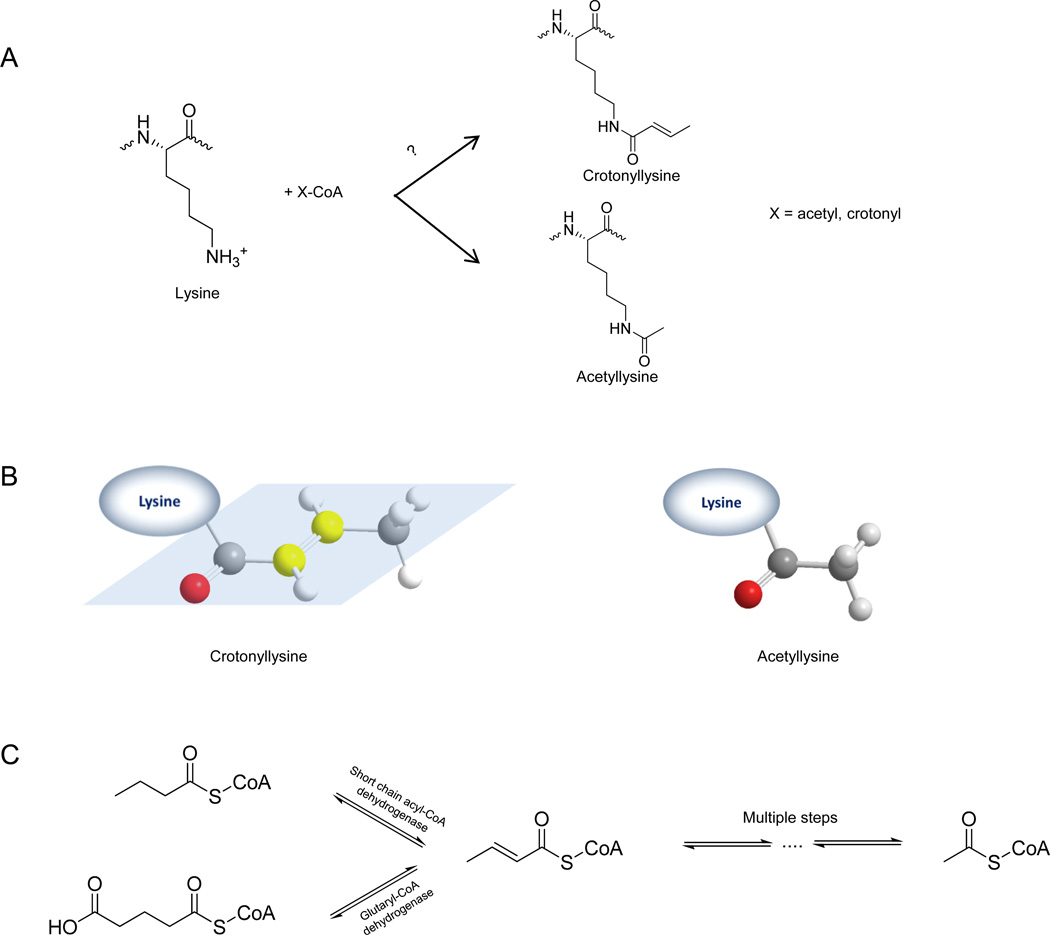Figure 2.
Short-chain lysine acylations. (A) An illustration of the enzymatic reactions for lysine acetylation by lysine acetyltransferases (KATs) using acetyl-CoA as a cofactor, and a hypothesized mechanism for Kcr using crotonyl-CoA as a cofactor. (B) Ball-and-stick models of a crotonyl group and an acetyl group. The three-dimensional arrangement of four carbons and one oxygen of the crotonyl group are rigid and located in the same plane (left). The two olefinic carbons of the crotonyl group are shown in yellow. In contrast, the tetrahedral CH3 in the acetyl group (right) can be rotated such that it is structurally very different from the crotonyl group. (C) Crotonyl-CoA metabolism pathways. Crotonyl-CoA was generated from butyryl-CoA or glutaryl-CoA, and oxidized to acetyl-CoA through multiple steps.

